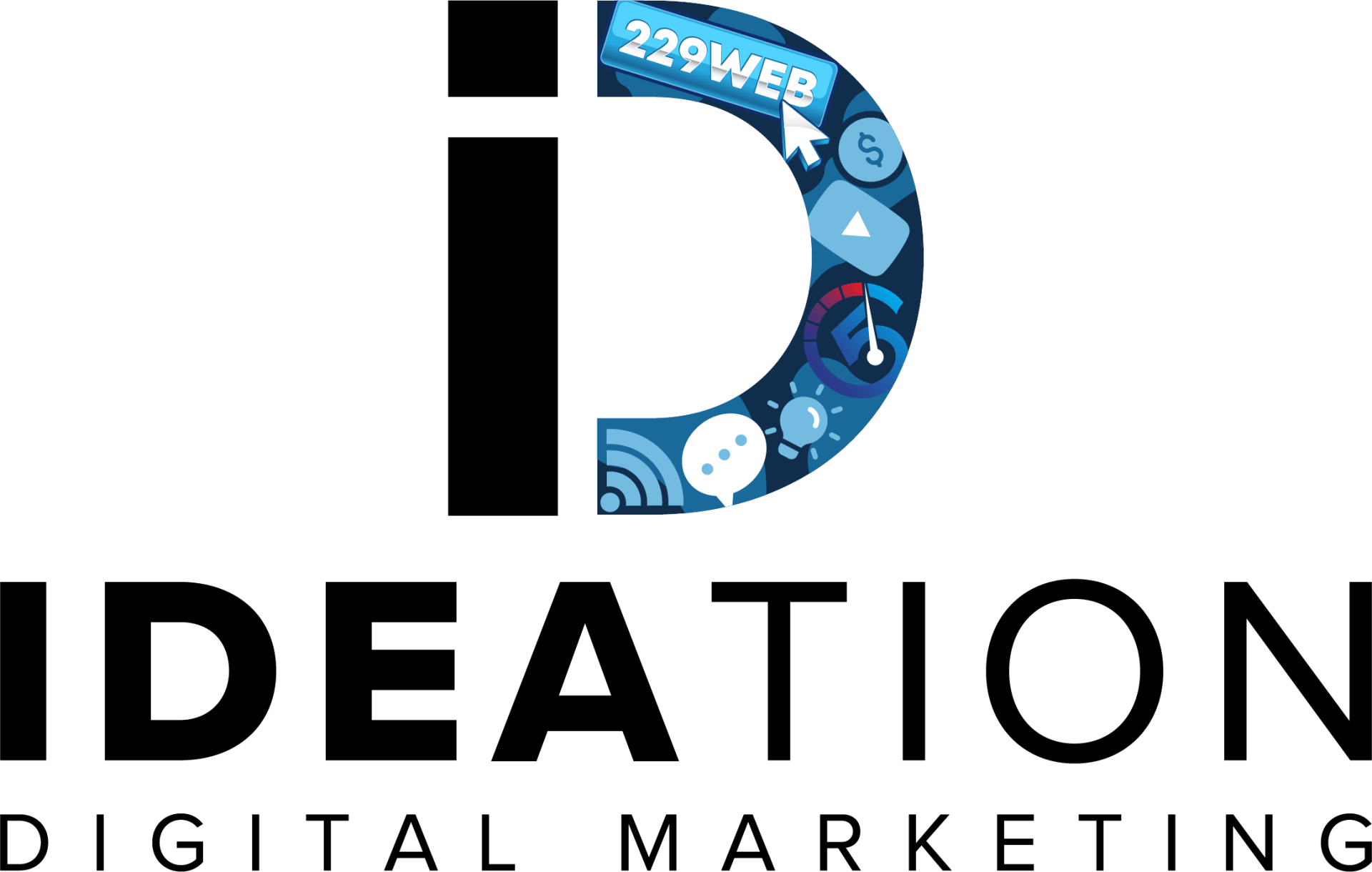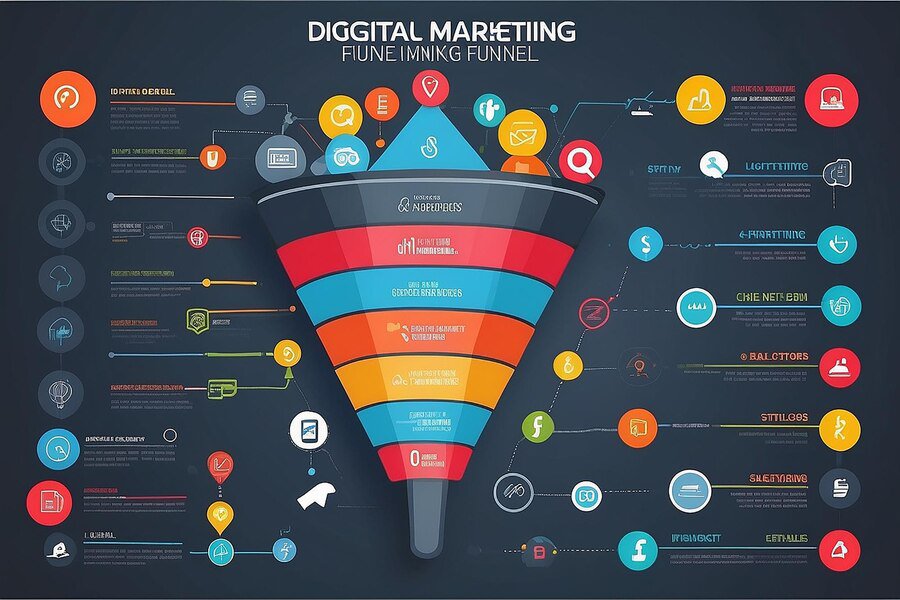222 Capitol Street, Suite 522
Charleston, WV 25301

Digital Dynamics: Elevating Your Business with Strategic Online Marketing
In the fast-paced digital era, the success of a business is intricately tied to its online presence and marketing strategies. As the world becomes increasingly interconnected, businesses that leverage the power of digital dynamics can gain a competitive edge and elevate their brand to new heights. Strategic online marketing is not just about having a website or a social media account; it's about understanding the digital landscape and using it to your advantage. In this article, we'll explore the key components of digital dynamics and how they can be harnessed to propel your business forward.
The Foundation: A User-Centric Website
In the ever-evolving digital ecosystem, where virtual interactions often precede physical ones, the concept of a user-centric website stands as the bedrock of online success. A user-centric website is not merely a digital space; it is a dynamic interface that bridges the gap between a brand and its audience, providing an immersive, intuitive, and gratifying experience for visitors. Let's delve deeper into the essential elements that constitute the foundation of a truly user-centric website.
Understanding the Essence of User-Centric Design
At its core, user-centric design is a human-centric philosophy that places the end-user at the epicenter of the design and development process. It goes beyond aesthetics, focusing on creating an environment that resonates with the expectations, behaviors, and preferences of the target audience. By understanding the motivations and needs of users, businesses can craft a digital experience that is not only visually appealing but also functional and purposeful.
Navigating Seamlessly Through User Experience (UX)
The user journey within a website should mimic the fluidity of an engaging conversation. Intuitive navigation is paramount, allowing users to effortlessly navigate through pages, find information, and accomplish tasks. A well-designed UX considers the logical flow of information, strategically placing elements to guide users on a seamless journey. Clear calls-to-action, thoughtfully organized menus, and strategically placed interactive elements contribute to an experience that keeps visitors engaged and satisfied.

Mobile Responsiveness: Adapting to the Diversity of Devices
In an era where users access the internet through an array of devices, including smartphones, tablets, and desktops, mobile responsiveness is not just a feature—it's a necessity. A user-centric website adapts gracefully to various screen sizes and resolutions, ensuring a consistent and enjoyable experience across devices. The responsive design is not only a user-friendly practice but also aligns with search engine algorithms, positively impacting rankings and visibility.
The Visual Symphony: Aesthetics with Purpose
Visual appeal is the first language a website speaks to its visitors. A user-centric website employs a harmonious blend of aesthetics and functionality. From the use of captivating images and well-chosen color schemes to maintaining a cohesive brand identity, the visual elements should complement the overall user experience. Striking the right balance between an eye-catching design and an uncluttered layout is an art that distinguishes a user-centric website.
Performance: The Need for Speed
In a world where every second counts, the speed and performance of a website can make or break user engagement. Optimization for speed involves a meticulous approach, incorporating practices such as image compression, efficient coding, and content delivery networks. A swift and responsive website not only prevents user frustration but also positively influences search engine rankings, contributing to an enhanced overall user experience.
The SEO Synergy: Elevating Visibility and Rankings
The user-centric approach extends beyond the realm of user satisfaction—it aligns seamlessly with
search engine optimization (SEO). Search engines, with their sophisticated algorithms, prioritize websites that offer a positive user experience. Elements such as mobile-friendliness, low bounce rates, and fast load times contribute to higher search engine rankings, making user-centric design not just a preference but a strategic imperative.

The Journey Continues: Measuring, Analyzing, and Iterating
The quest for user-centricity is an ongoing journey. Harnessing the power of analytics tools is crucial for understanding user behavior, preferences, and areas for improvement. Continuous measurement and analysis of performance metrics empower businesses to iterate on their websites, incorporating user feedback, addressing pain points, and staying attuned to the ever-evolving landscape of user expectations.
Social Media Mastery: Building Relationships
Social Media Mastery: Building Lasting Relationships in the Digital Age
In the dynamic landscape of the digital era, social media mastery is not just a marketing strategy; it's a powerful means of building genuine and lasting relationships with your audience. Beyond the metrics of likes, shares, and followers, the true essence of social media lies in its ability to foster connections, facilitate conversations, and create a sense of community. Let's explore the multifaceted dimensions of social media mastery and how it goes beyond mere engagement to cultivate meaningful relationships.
Understanding the Social Media Ecosystem
Social media platforms have evolved into vibrant ecosystems where individuals and businesses converge, sharing ideas, opinions, and experiences. To master social media is to recognize and respect the unique dynamics of each platform, from the concise conversations on Twitter to the visually rich narratives on Instagram. Tailoring your approach to suit the nuances of each platform ensures that your brand's voice resonates authentically with diverse audiences.
Content as a Bridge: Crafting Narratives that Connect
At the heart of social media mastery lies the art of storytelling. Content is not just about promoting products or services; it's a narrative that invites your audience into the story of your brand. Whether through compelling visuals, thought-provoking captions, or engaging videos, the content you share should evoke emotions, spark conversations, and align with the values of your community. By crafting stories that resonate, you transform your brand from a mere entity into a relatable personality.
Consistency and Authenticity: The Building Blocks of Trust
Building relationships, be it in the digital or physical realm, requires trust. Consistency in your brand voice, visual identity, and posting schedule instills a sense of reliability. Authenticity, on the other hand, is the cornerstone of trust. Social media mastery involves being transparent, genuine, and human. Sharing behind-the-scenes glimpses, acknowledging both successes and challenges, and responding authentically to comments and messages humanizes your brand and fosters trust among your audience.
Community Engagement: Nurturing a Digital Tribe
A key aspect of social media mastery is the cultivation of a digital community. Beyond accumulating followers, it's about nurturing a tribe of individuals who feel a sense of belonging to your brand. Engaging with your audience through comments, direct messages, and interactive content not only strengthens existing relationships but also invites new members into your digital community. Recognizing and celebrating your followers' contributions and milestones further solidifies the sense of community.
Listening and Responding: The Two-Way Street of Communication
Social media is not just a platform for broadcasting messages; it's a dynamic space for conversation. Mastery in social media involves active listening—monitoring mentions, comments, and trends to understand the pulse of your audience. Responding promptly, empathetically, and meaningfully to inquiries, feedback, and discussions demonstrates a commitment to open communication. By treating social media as a two-way street, you transform it into a dialogue rather than a monologue.
New Paragraph
New Paragraph
Adaptability in the Face of Change: Riding the Waves of Trends
Social media is dynamic, with trends and algorithms constantly evolving. Mastery in this realm requires adaptability. Stay attuned to emerging trends, algorithm changes, and shifts in user behavior. Experiment with new features and formats to keep your content fresh and engaging. Being agile in your social media strategy not only keeps your brand relevant but also demonstrates a commitment to evolving alongside your audience.
Content is King: Creating Valuable Assets
Content marketing is a cornerstone of online success. Whether it's blog posts, videos, infographics, or podcasts, creating high-quality, valuable content establishes your authority in your industry. Content that educates, entertains, or solves problems for your audience not only attracts visitors but also keeps them coming back. Additionally, shareable content extends your reach, as satisfied customers become brand ambassadors.
Data-Driven Decisions: Analytics and Insights
In the digital realm, data is a goldmine. Utilizing analytics tools provides valuable insights into user behavior, preferences, and the effectiveness of your marketing efforts. By understanding how visitors interact with your website and respond to your campaigns, you can refine your strategies for maximum impact. Data-driven decision-making empowers businesses to allocate resources efficiently and optimize their marketing ROI.
Email Marketing: Personalized Engagement
Email marketing remains a powerful tool for nurturing leads and maintaining customer relationships. Crafting personalized and targeted email campaigns allows you to connect with your audience on a more intimate level. Automation tools enable you to send timely and relevant messages, whether it's welcoming new subscribers, promoting products, or re-engaging lapsed customers.
Paid Advertising: Targeted Outreach
While organic methods are crucial, paid advertising can provide an immediate boost to your online visibility. Platforms like Google Ads and social media advertising allow for highly targeted campaigns, reaching specific demographics and interests. Strategic budget allocation and continuous optimization ensure that your advertising efforts yield the best possible results.
Conclusion
In conclusion, the digital dynamics of online marketing are multifaceted, requiring a holistic approach. By establishing a user-centric website, mastering social media, creating valuable content, leveraging data, engaging in email marketing, and incorporating paid advertising, businesses can navigate the digital landscape effectively. Embracing these strategies not only elevates your brand but also positions your business for sustained success in an ever-evolving digital marketplace.

Main Office
222 Capitol Street, Suite 522
Charleston, WV 25301
other offices
48 1/2 Second Ave, Williamson, WV 25661
20 Clinch Mountain Ave, Lebanon, VA 24266,
Contact
DIGITAL MARKETING SERVICES
All Rights Reserved | Ideation Digital
Private Policy
All Rights Reserved | Ideation Digital











